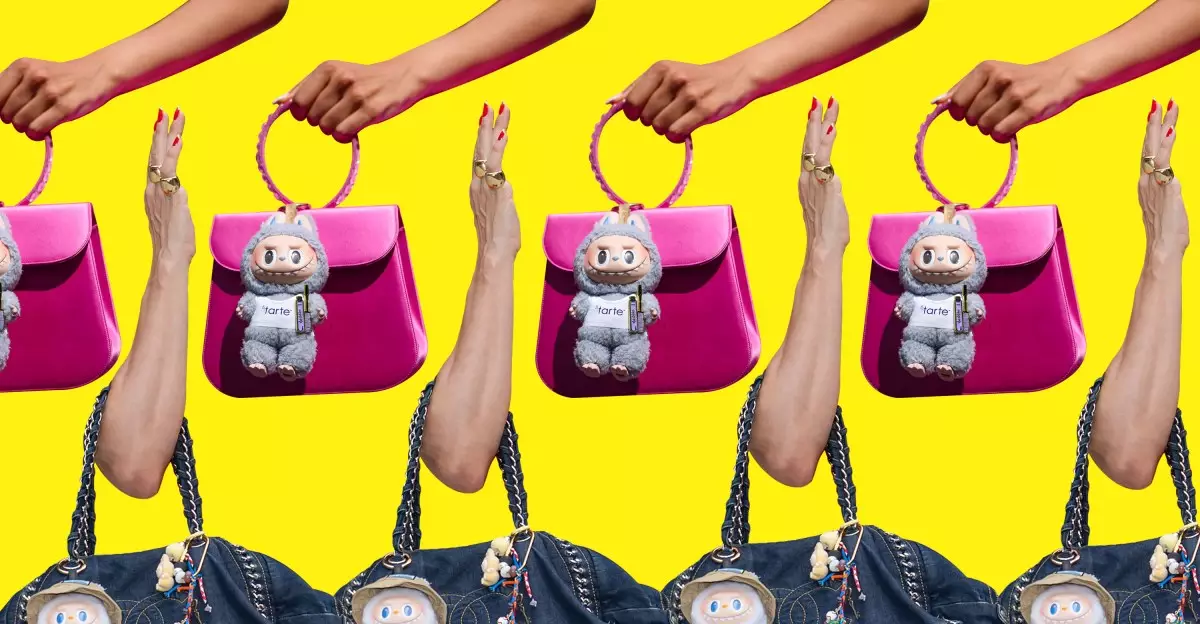In the world of modern collectibles, few phenomena have created as much intrigue and frustration as Labubu, the compact, adorable figures from Pop Mart. Their rise to fame is not merely a matter of cute design, but a testament to the complex dance between desire, effort, and luck. Unlike straightforward purchases, acquiring a Labubu involves navigating a virtual maze of digital chaos and psychological cues that resemble gambling more than shopping. This tension between simplicity and complication fuels an addictive cycle, transforming what seems to be a child’s toy into an intense quest. People are drawn into this chaos because, deep down, they’re seeking more than just a collectible—they’re after a thrill, an adrenaline rush waiting inside every mystery box.
The appeal hinges on the unpredictability of what’s inside each box. The excitement is not just about ownership but about the process—the highs of possibly scoring a rare color and the lows of endless failed attempts. The allure is reinforced by social media influencers and online forums, where seasoned collectors share hacks and horror stories, creating a communal narrative that elevates the challenge to an art form. It’s a unique, modern ritual—one that merges digital game mechanics with consumer culture—where patience, persistence, and luck dictate success.
The Price of the Hunt: The Frustrating Reality of Digital Scarcity
While the price tag for an individual Labubu is modest—around $27.99—the real barrier is the labor required to get one. Pop Mart has deliberately constructed a digital environment that mimics a chaotic Black Friday sale, with stock that appears and disappears within seconds, often demonstrated through grayed-out countdowns and randomized releases. The experience is intentionally designed to be unpredictable, requiring participants to stay glued to their screens and react instantly. This creates an environment that feels more like an adrenaline-fueled game than a straightforward buy.
For the collector, hours are spent studying the app, tracking timers, and employing various hacks—such as toggling Wi-Fi or lurking on TikTok streams—to lower the barriers. Influencers and dedicated fans often share tips that turn the purchasing process into an elaborate ritual, almost a game of skill and endurance. But despite these efforts, success remains a game of chance. The phenomenon is reminiscent of gambling, where the thrill lies in the unpredictability of the outcome, overshadowing the actual value of the toy itself.
The overarching reality is that, for most, the pursuit of a Labubu is an exercise in futility—an exercise that comes with emotional highs and crushing lows. The frustration from failed attempts often outweighs the joy of actually owning the figure. It’s a stark reminder that modern collectible culture has shifted from appreciation to acquisition—where the effort to obtain becomes part of what makes the item desirable.
The Value Beyond the Toy: The Culture of Obsession and Strategy
What makes Labubu especially compelling is the underlying culture that surrounds it. Forums, social media groups, and streaming platforms have fostered a communal space where enthusiasts exchange strategies, horror stories, and brag about their latest scores. Some collectors spend hours camped out online, waiting for a rare drop or streaming live to catch the right moment to snatch one up. Their patience and resilience are celebrated nearly as much as their success in unboxing.
However, beneath this camaraderie lies an ironic truth: the actual toy is almost secondary. The true value rests in the narrative of effort—every failed attempt, every hack, every moment of suspense. The thrill is less about the physical object and more about the pursuit itself. This peak into the social psyche reveals a modern form of escapism—where the pursuit of rarity and the shared experience of frustration create a sense of belonging and achievement.
The possibility of flipping Labubu for profit exists, but the margins are tight, and the market is flooded with cheaper counterfeit options—Lafufus—that further depress prices. For genuine collectors, the true joy is in the hunt, not the resale value. The rarity is ephemeral; what remains is the story of perseverance, patience, and the thrill of the unknown.
The Paradox of Hype and Disillusionment
Despite its frustrations, the Labubu craze exemplifies a captivating paradox: the more you invest, the more addictive it becomes. As search volumes soar and TikTok streams draw countless viewers, the culture intensifies. Viral unboxings and DIY hacks perpetuate the cycle, feeding the insatiable appetite of the community.
Yet, it’s only a matter of time before this hype wanes. When the digital chaos settles and buying Labubu ceases to be a stressful ordeal, the appeal will shift. At that point, these figures will simply be toys—no longer symbols of effort, no longer badges of perseverance. But until then, the hunt persists, fueled by the thrill of the chase, and the deep-seated lure of unpredictability that keeps collectors coming back for more.
The real question isn’t whether Labubu will fade away but whether the culture of obsession it has fostered will adapt or dissolve. For now, the quest continues—each attempt a testament to human perseverance, and each victory a fleeting affirmation of hope.

